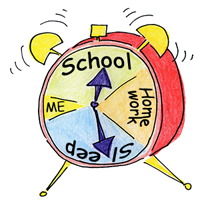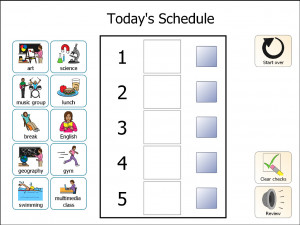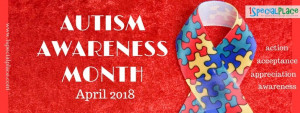
Autism Series IX: Keeping A Routine
Autism Series IX: Keeping A Routine
Autism Spectrum Disorder – A child with ASD (Autism Spectrum Disorder) / Autism will be able to perform much better and be much calmer when his / her day is structured and has a routine. In other words, it simply means a person with Autism has a unique nervous system. Further, Autistic have atypical brains. Why is it important to keep to a routine with kids with Autism? Research tells us that children with ASD may – find it challenging to understand what is coming next; have a need (behavioral/sensory) for sameness in the environment, or, require predictability in their surroundings. Therefore, keeping an element of structure, repetition, and routine allows them to engage better with objects and people.
Everyone knows how it feels to move out of ones’ comfort zone. It is stressful and many times you want to cling on to familiarity or even withdraw from the new experience. That is what it is like for many children with ASD when there are changes in their routine or transitions are happening.
Changes in routine are inevitable. However, there are some pointers that will help plan a routine better and deal with the transitions /changes.
How do I make a routine that will not challenge my child (with ASD) too much? Here are a few tips.
General tips:
 Establish a routine that has the least amount of transitions/changes as far as possible especially if your child is beginning learner or has severe sensory/transitional issues.
Establish a routine that has the least amount of transitions/changes as far as possible especially if your child is beginning learner or has severe sensory/transitional issues.- Whenever there are changes in the activities or transitions, make sure to plan for these changes as far as possible, and keep the child aware of them.
- If the child has several changes in routine, and preparation in advance is not an option; then the presence of a familiar adult who can assist the child through the stressful time can be helpful.
Weekly routine:
- Make a comfortable routine for weekdays vs weekends. Weekdays will be more structured with school, sessions etc. – being typically packed in during that time. However, the weekends may more break in routines and changes. Some amount of sameness and familiarity should be incorporated within though.
- Within each activity during the day – e.g. bedtime/ sleep, mealtime – the routine can be managed. It will make the entire activity easier to do. The child will fair better and the activity would have a more conducive outcome.
Within a session:
- Within a session, a routine can also be maintained. Ensure to have a beginning and ending that is familiar to the child.
- Let the child know what all s/he may be doing in a session. This will ensure the child knows what to expect. This can be laid out for the child as the session starts.
- Prepare the child for transitions or changes in the sessions.
- Be consistent.
When we are taken out of our comfort zone, very few amongst us would face it head-on. However, for the rest of us, we would find it easier to jump into the unknown if – we know about the outcome of the unknown situation, have someone familiar with us through it or someone to guide us through step by step. These are few of the ways that many of us would cope.
What simple strategies can be used to assist change in routine?
Changes in routine or presence of transitions can be handled in several different ways. They can be verbal, visual or auditory inputs that help guide the way. Here is how:
Verbal 
- Talk to the child about what to expect – ” Now, the task will end”
- Use simple sentences – “Car time is finished”
- Talk to the child when the change/transition is just about to begin- “We will change in 10 seconds….”
- Talk to the child when the transition is complete- “Task is finished!”
- Repeat at every step – before the change, through the change, once the change is over or even when next transition may take place
Visual 
- Visuals are a great way to remind a child about the transition
- They need to be simple to understand, be presented in a chronological order.
- They may include pictures, photos, words etc.
- Visuals reminder can be presented about transitions through the entire day, a session or a part of a session can be visually presented.
- Visuals are also great to indicate completion of transition at a given time. By keeping a track of the completed activities and transitions, the child will be better prepared for the day (at school or within a session etc.)
Auditory 
- The child can learn how to cue certain sounds with transitions.
- They can include words from a teacher or parent – e.g. Time for next activity. or Task over. or Time up.
- It can also be a bell to indicate the end of class or clap of hand to indicate the end of an activity etc.
The strategies need to be best suited to the child’s ability and the environment the child is in. Consistency in the use of the strategies is essential and many time crucial for a child to have a smooth transition.
***
Did you like the article? Leave a comment.
***
Subscribe to us to receive the most recent articles on Autism/ ASD.
If you wish to know more about Speech Therapy, kindly contact us
For more ideas check out our other blogs
- What is speech therapy and what Speech Therapist Do? - December 22, 2022
- 5 Simple Ideas to Make Flashcards Fun - June 28, 2018
- Should I use ‘NO’ with my child? - June 24, 2018


Leave a Comment
(0 Comments)